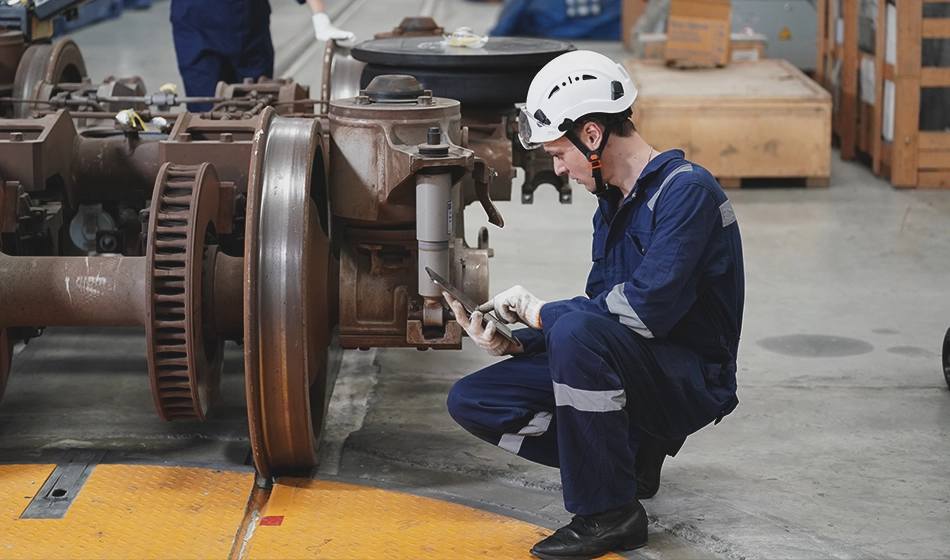Why Maintenance Teams Can’t Afford Bad Parts Data (and What Works Instead)
Quick Summary Poor parts data is one of the most overlooked risks in MRO. Duplicates, metadata gaps, and workforce turnover drag down uptime, cost,...
3 min read
Linda Piercy
:
Jun 10, 2025 10:05:22 AM

Industrial maintenance is evolving from a reactive cost center into a proactive driver of business performance. But many organizations still face significant cost pressures tied to outdated practices and underinvestment.
This article breaks down the five biggest cost drivers in industrial maintenance and explores how digital transformation, data intelligence, and smarter tools can reduce waste, prevent downtime, and empower your workforce.
You’ll learn:
Where hidden costs lurk in maintenance operations
How digital tools help technicians work smarter
What data-driven strategies reduce downtime and inventory waste
Why Parts Intelligence matters to long-term cost control
Short-term cost-cutting often results in long-term losses. Many industrial organizations defer critical investments in updated software, spare parts catalogs, and modern documentation systems—only to pay for it later in unplanned downtime and service delays.
Neglecting asset modernization can lead to outdated maintenance manuals, obsolete parts, and unsupported software systems. Inconsistent spare part records further complicate repair processes, stretching repair times and increasing human error.
Invest in digital tools like visual part search, cloud-based documentation, and predictive analytics platforms that support continuous improvement.
Unplanned downtime can cost manufacturers between $3,000 to $200,000 per hour, according to Deloitte. When machines go offline, the financial impact ripples through the entire operation—stopping production, straining supply chains, and exhausting service teams.
Even worse, many companies lack clear KPIs around asset performance, maintenance response times, or root-cause failures.
Smart sensors, digital twins, and Parts Intelligence platforms like Partium can power predictive maintenance strategies. Technicians armed with fast, visual part identification and real-time data can drastically reduce time-to-repair and improve uptime.
Missing BOMs, diagrams, and service instructions are a persistent issue in MRO environments. As experienced staff retire, undocumented tribal knowledge disappears—leaving gaps in processes and increasing the risk of incorrect repairs.
A structured, digital documentation system ensures that essential information—such as parts data, service manuals, and visual diagrams—is always available and easily searchable.
Integrating these systems with mobile tools gives technicians instant access, whether they're on the factory floor or in the field.
Many companies still manage maintenance workflows using spreadsheets or siloed legacy systems. Without digitized machine and asset data, it’s nearly impossible to make quick, informed decisions.
A recent industry survey found:
33% manage production assets centrally
37% are transitioning to digital data evaluations
36% actively analyze company data to drive operations
Digital platforms that analyze parts usage, inventory trends, and supplier performance allow managers to reduce costs while improving planning accuracy. Real-time dashboards and machine learning help avoid overstocking or under-supplying key components.
When maintenance teams are overloaded, they make more errors—leading to missed preventive checks, misidentified parts, and inefficient service. Manual part searches and long warehouse walks further waste technician time.
With a visual parts search solution like Partium, maintenance techs can identify parts in seconds using a smartphone photo. It minimizes warehouse trips, reduces ordering mistakes, and improves wrench time.
Over time, reduced stress and streamlined workflows contribute to fewer mistakes, lower labor costs, and a more satisfied team.
Maintenance leaders know the pressure: reduce downtime, optimize spare part use, and make every labor hour count. But the truth is, without clean, connected, and contextual data—you're fighting with one hand tied behind your back.
From digitizing documentation to enabling instant part recognition, the companies seeing the biggest gains are those rethinking maintenance not as a cost center—but as a performance engine. With tools like Partium, that shift is not just possible. It's profitable.
Want to dive deeper into how Parts Intelligence and modern maintenance strategies are cutting costs and driving uptime? These resources explore everything from spare parts data quality to digital transformation in MRO operations.
📘 As manufacturers face growing pressure to boost productivity, reduce downtime, and maintain operational agility, the cost of industrial maintenance is rising—fast. According to the Rockwell Automation State of Smart Manufacturing Report, over 50% of manufacturers say they are struggling to keep up with aging equipment, workforce shortages, and unplanned downtime. Yet many still lack a clear understanding of where maintenance dollars are going—or how to stop the bleed.
🎥 Video: How to Cut Industrial Maintenance Costs with Partium
This short video illustrates how Partium helps reduce every major cost driver in industrial maintenance—from incorrect part orders to technician inefficiency and documentation errors
.

Quick Summary Poor parts data is one of the most overlooked risks in MRO. Duplicates, metadata gaps, and workforce turnover drag down uptime, cost,...

Quick Summary AI is transforming railway maintenance by reducing manual effort, accelerating part identification, and preventing unplanned downtime....

Quick Summary Maintenance, Repair, and Operations (MRO) processes are often overlooked—yet they hold some of the biggest cost-saving opportunities in...